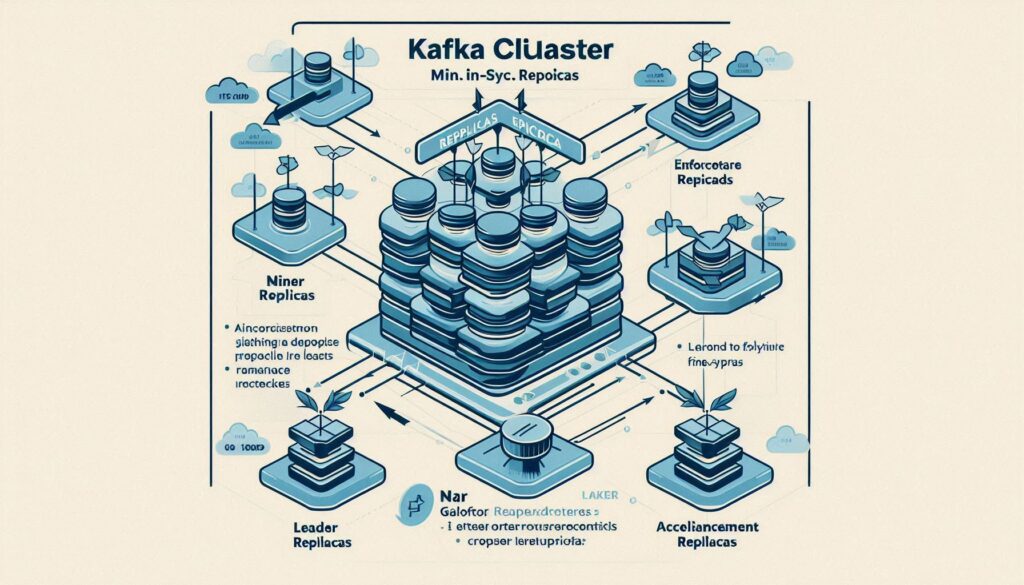Estimated reading time: 3 minutes
Log compaction in Kafka is a powerful feature for data retention and efficiency. In this blog post, I explain log compaction, why it matters, and how it can benefit your Kafka data management strategies. So, let’s dive in.
What is Log Compaction in Kafka?
The Log compaction Mechanism in Kafka ensures that it retains the most recent value for each key within a Kafka topic. Instead of storing every single message produced, Kafka compacts the log to retain only the latest update for each key. This process helps keep the log size manageable and improves storage efficiency.
Why is Log Compaction Important?
- Data Efficiency: By keeping only the latest values, log compaction reduces the amount of stored data, making it more efficient.
- Better Performance: With fewer messages to process, Kafka can deliver faster read and write performance.
- Improved Storage Management: Log compaction helps better storage utilization, which is crucial for large-scale data operations.
How Log Compaction Works in Kafka
Log compaction operates by periodically scanning the log for each topic and removing old records superseded by newer records with the same key. Here’s a simplified breakdown of the process:
Key-based Retention: Kafka retains at least the last value for each key. If a key has multiple updates, Kafka will keep only the latest update.
Compaction Process: The log cleaner thread runs in the background, identifying and compacting eligible logs.
Configuration: Log compaction can be configured at the topic level by setting the cleanup.policy to compact:
kafka-topics --zookeeper localhost:2181 --alter --topic my-topic --config cleanup.policy=compactSetting Up Log Compaction
To enable log compaction in Kafka, follow these steps:
1. Create or Modify a Topic: Ensure the topic is configured for log compaction:
kafka-topics --zookeeper localhost:2181 --create --topic my-topic --partitions 3 --replication-factor 3 --config cleanup.policy=compact2. Monitor Compaction: Finally, use Kafka monitoring tools to monitor the compaction process and ensure it’s functioning as expected.
Log Compaction Example with Code
To demonstrate log compaction, let’s use a producer to send messages with the same key but different values and a consumer to verify that only the latest value is retained.
Producer Code (Python)
The producer sends multiple updates for the same key.
from kafka import KafkaProducer
import time
producer = KafkaProducer(bootstrap_servers='localhost:9092')
for i in range(5):
key = b'user1'
value = f'update-{i}'.encode()
producer.send('compacted-topic', key=key, value=value)
time.sleep(1)
producer.flush()
print("Messages sent.")Consumer Code (Python)
The consumer reads from the compacted topic to observe the retained values.
from kafka import KafkaConsumer
consumer = KafkaConsumer(
'compacted-topic',
bootstrap_servers='localhost:9092',
auto_offset_reset='earliest',
enable_auto_commit=True,
group_id='example-group'
)
for message in consumer:
print(f"Key: {message.key.decode()}, Value: {message.value.decode()}")Validating Log Compaction
After running the producer and consumer:
- Initially, the consumer may see all messages if compaction hasn’t occurred yet.
- Once Kafka performs log compaction (triggered based on configurations like
log.retention.msorsegment.ms), only the most recent value for each key will remain.
Conclusion
Log compaction in Kafka is a powerful feature that improves data efficiency, optimizes performance, and enhances storage management. Implement log compaction to optimize and ensure the efficiency of your Kafka-based data streams. Whether you’re managing large-scale transaction logs or handling smaller data sets, log compaction can make a significant difference.




